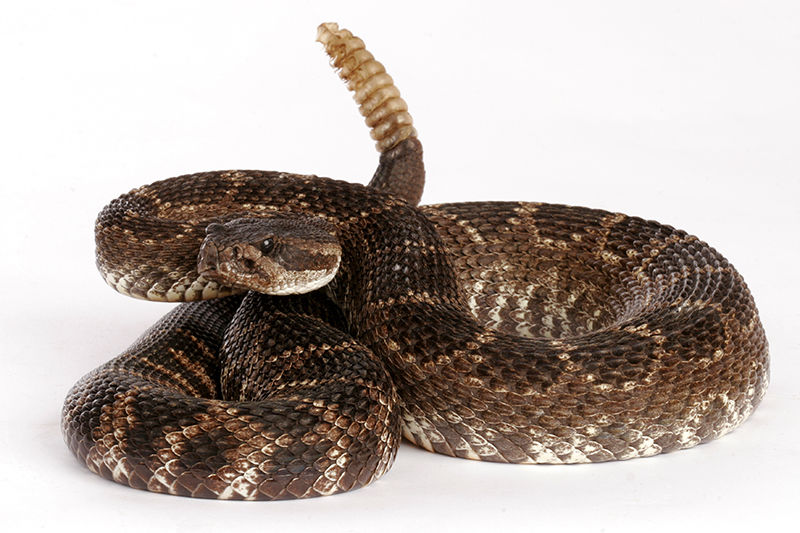“Salvation on Sand Mountain: Snake Handling and Redemption in Southern Appalachia” (1995) is a memoir by Alabama native, journalist and creative writing professor Dennis Covington.
In 1991, preacher Glenn Summerford was convicted and sentenced to 99 years for forcing his wife at gunpoint to stick her arm into a cage of rattlesnakes. Covington covered the trial, became fascinated, discovered that his own family roots were entwined with snake handling, and eventually came — for a time — to take up serpents himself.
Covington profiles, and comes to feel deep affection for, the poor Southern whites who head up the home-grown, snake-handling churches. “Peculiar and insular, they are people of Scotch-Irish descent, religious mystics who cast out demons, speak in tongues, drink strychnine, run blowtorches up their arms and drape themselves with rattlesnakes.”
A snake handler named Brother Carl Porter explains the underlying “theology.” “The Bible says you’re gonna suffer for your faith. Look what happened to Stephen. I’d rather die of snakebite than get stoned to death. And what about Peter? Didn’t they crucify him upside down on a cross? I’d rather die of snakebite.”
As of the writing of the book, at least 71 people had been killed by poisonous snakes in the course of religious services in the U.S.
But we don’t have to pick up poisonous snakes to be in daily, intimate contact with evil. We don’t have to tempt God by handling serpents capable of delivering a fatal bite. We live on a personal level with our own terrible propensity to return emotional and spiritual violence for violence, and the predictably disastrous results. We live with our propensity to addictions and attachments of various kinds. We live with our fear of telling the truth and honest communication.
The scandal of the cross is often too much for us to swallow. We want vanquishing armies, not the vulnerability of love. We want our team to win, not to stand by seemingly helpless as our family, friends and Church suffer.
Last week I paid a visit to the amphibians, invertebrates and reptiles at the L.A. Zoo’s LAIR exhibit. From a placard I learned that we have plenty of snakes indigenous to Southern California, including the Southern Pacific Rattlesnake and the (non-venemous) California Striped Racer right in Griffith Park.
Inside, a clutch of sweet Iranian Harlequin Newts, black with white spots, huddle conspiratorially together in a corner of their cage as if passing a joint. There’s a Shingleback skink, a tank of snapping turtles and a Gray’s monitor, a large, extremely shy lizard from the Philippines thought to be extinct until its rediscovery in 1980.
As for the snakes, they bite, squeeze, inject. The Boelen’s Python, a New Guinea native, can grow to almost 10 feet. Its bright yellow markings resemble streaks of dappled sunlight, and from its weaving head flickers a long, pink tongue.
The European Long-Nosed Viper is less than three feet long, but is mainland Europe’s largest and most dangerous viper. Pale yellow with darker yellow diamond markings, its teeny unmoving yellow eye with a slit of a black pupil looks extraordinarily malevolent.
The Green Tree Viper wraps its prehensile tail around a branch, then strikes out to kill its prey. Parrot green with dappled yellow markings, the creature has quadrupled itself around a branch to form a thick bale of snake the exact same color as the surrounding foliage.
The West African Green Mamba paralyzes and assassinates its victims with a single bite. Its venom is among the deadliest in the world. This reptile is slender, sporting yellow and jet black scales and an iridescent silver head.
The Mangshan Pit Viper can grow as long as seven feet. The Bushmaster, another pit viper and the largest venomous snake in the Americas, strikes its prey, then releases and safely swallows his meal.
The Gaboon Viper has two-inch long, dagger-like fangs — the longest of any snake on the planet. The beast is fat, wide, meaty and, with its macho black and white markings, would have made a nice belt for an especially ornery Hell’s Angel. Even standing on the other side of a thick piece of glass, I stood a foot away from the cage.
A sea of tots milled underfoot. One tiny lad, clearly new to walking, staggered over, pressed a friendly face to the glass, and piped: “What’s his name?”
In just such a way had Adam and Eve, perhaps, first regarded the serpent in the Garden of Eden.
Nonbelievers scoff at our “hokey” statues and images. And, as a convert, I’m often slow on the uptake.
Shortly after my confirmation and First Communion, I was given a prayer card of the Blessed Virgin standing atop, and mistress of, the globe. In her flowing blue robes and crown of gold stars, she reigned supreme and serene: Queen of Heaven and Earth.
The card was propped on my desk for weeks before one day I noticed.
This was no pious, plaster saint. This was Mary — one of us — who all her life had silently “pondered these things in her heart.” Mary, who during the wedding at Cana, had deferred to Christ (who she didn’t fully understand), saying, “Do whatever he tells you.” Mary, who, as her beloved son was tortured to death, stood steadfast at the foot of the cross.
Beneath one dainty foot, she was crushing the head of a poison-green snake.
Heather King is a blogger, speaker and the author of several books.

